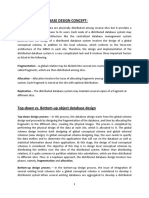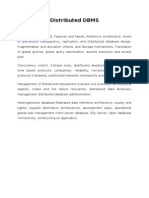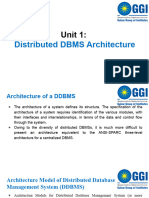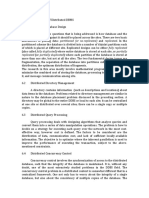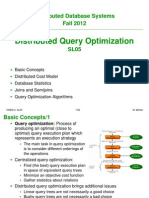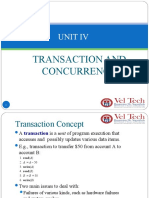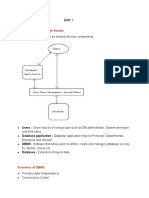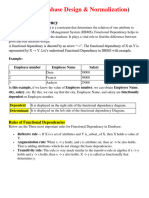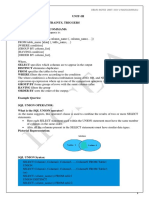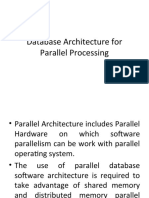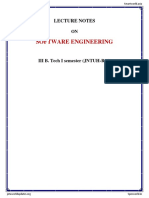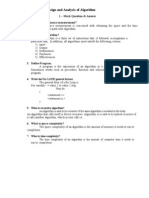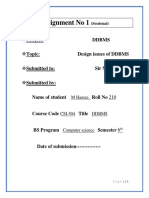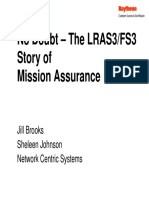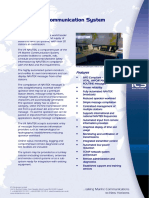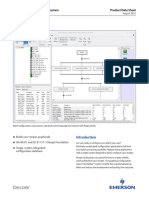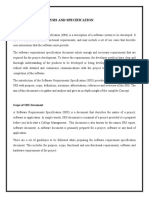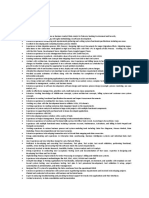100% found this document useful (3 votes)
3K views8 pagesDistributed DBMS Challenges
Distributed database management systems face additional complexity compared to centralized systems. There are several key problem areas including distributed database design, query processing, concurrency control, and reliability. Distributed database design involves determining how to fragment and allocate data across nodes as well as handling replicated versus non-replicated data. Query processing requires optimizing queries involving multiple nodes based on data distribution and network latency. Concurrency control involves synchronization of concurrent accesses and consistency of transactions across multiple database copies. Reliability requires making the system resilient to failures and ensuring atomicity and durability of transactions.
Uploaded by
Keshav SharmaCopyright
© © All Rights Reserved
We take content rights seriously. If you suspect this is your content, claim it here.
Available Formats
Download as PPTX, PDF, TXT or read online on Scribd
100% found this document useful (3 votes)
3K views8 pagesDistributed DBMS Challenges
Distributed database management systems face additional complexity compared to centralized systems. There are several key problem areas including distributed database design, query processing, concurrency control, and reliability. Distributed database design involves determining how to fragment and allocate data across nodes as well as handling replicated versus non-replicated data. Query processing requires optimizing queries involving multiple nodes based on data distribution and network latency. Concurrency control involves synchronization of concurrent accesses and consistency of transactions across multiple database copies. Reliability requires making the system resilient to failures and ensuring atomicity and durability of transactions.
Uploaded by
Keshav SharmaCopyright
© © All Rights Reserved
We take content rights seriously. If you suspect this is your content, claim it here.
Available Formats
Download as PPTX, PDF, TXT or read online on Scribd
/ 8


